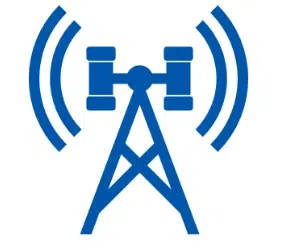Cell tower signals, also known as cellular signals, work through a system of wireless communication that enables mobile devices, such as cell phones, to connect to a cellular network and communicate with each other. Here’s how cell tower signals work:
- Cellular Network Infrastructure:
- Cellular networks consist of a network of cell towers (also known as base stations or cell sites) that are strategically placed to cover specific geographic areas.
- Each cell tower is equipped with antennas and radio equipment that transmit and receive wireless signals.
- Cell Coverage Areas:
- The coverage area of each cell tower is divided into sectors, often referred to as “cells.” These cells are shaped like pie slices and are designed to provide signal coverage in different directions.
- Multiple cell towers are typically deployed in an area to create a network that provides seamless coverage.
- Device Registration:
- When a mobile device, such as a cell phone, is powered on and within range of a cell tower, it seeks to connect to the nearest tower with the strongest signal.
- The device sends a registration request to the tower, providing information about itself, including its unique identification (IMEI or ESN).
- Signal Transmission:
- The cell tower responds by assigning a channel and frequency to the device. This channel is used for both transmitting and receiving signals.
- When you make a call, send a text message, or use data on your mobile device, the device communicates with the cell tower by transmitting radio signals.
- Signal Handoff:
- As you move, your device continuously monitors the signal strength from nearby cell towers. When it detects that a stronger signal is available from a different tower, it may initiate a handoff.
- A handoff is a seamless transition from one cell tower to another to maintain a continuous connection without dropping the call or losing data connectivity.
- Cell Tower Communication:
- The cell tower acts as an intermediary between your mobile device and the cellular network’s core infrastructure, which includes switching centers, data centers, and servers.
- Your voice, data, or text message is relayed through the cell tower to the network’s core, where it is routed to its destination.
- Network Routing:
- For voice calls, the network routes the call to the recipient’s mobile device or to a landline phone. For data and text messages, the network routes the data to the appropriate destination, such as a website server or another mobile device.
- Return Communication:
- The network sends the response or data back through the same path, including the cell tower, to your mobile device.
- Data Encryption and Security:
- Cellular networks employ encryption and security measures to protect the confidentiality and integrity of voice and data transmissions.
- Internet Access:
- For mobile internet access, cell towers are connected to the internet, allowing mobile devices to access online services and websites through the network.
Cell tower signals rely on a combination of radio frequencies, cellular protocols (such as GSM, CDMA, LTE, or 5G), and network infrastructure to enable wireless communication. The network’s ability to handle a large number of simultaneous connections and seamless handoffs between cell towers is what allows us to use mobile devices for voice calls, text messaging, and internet access while on the move.
